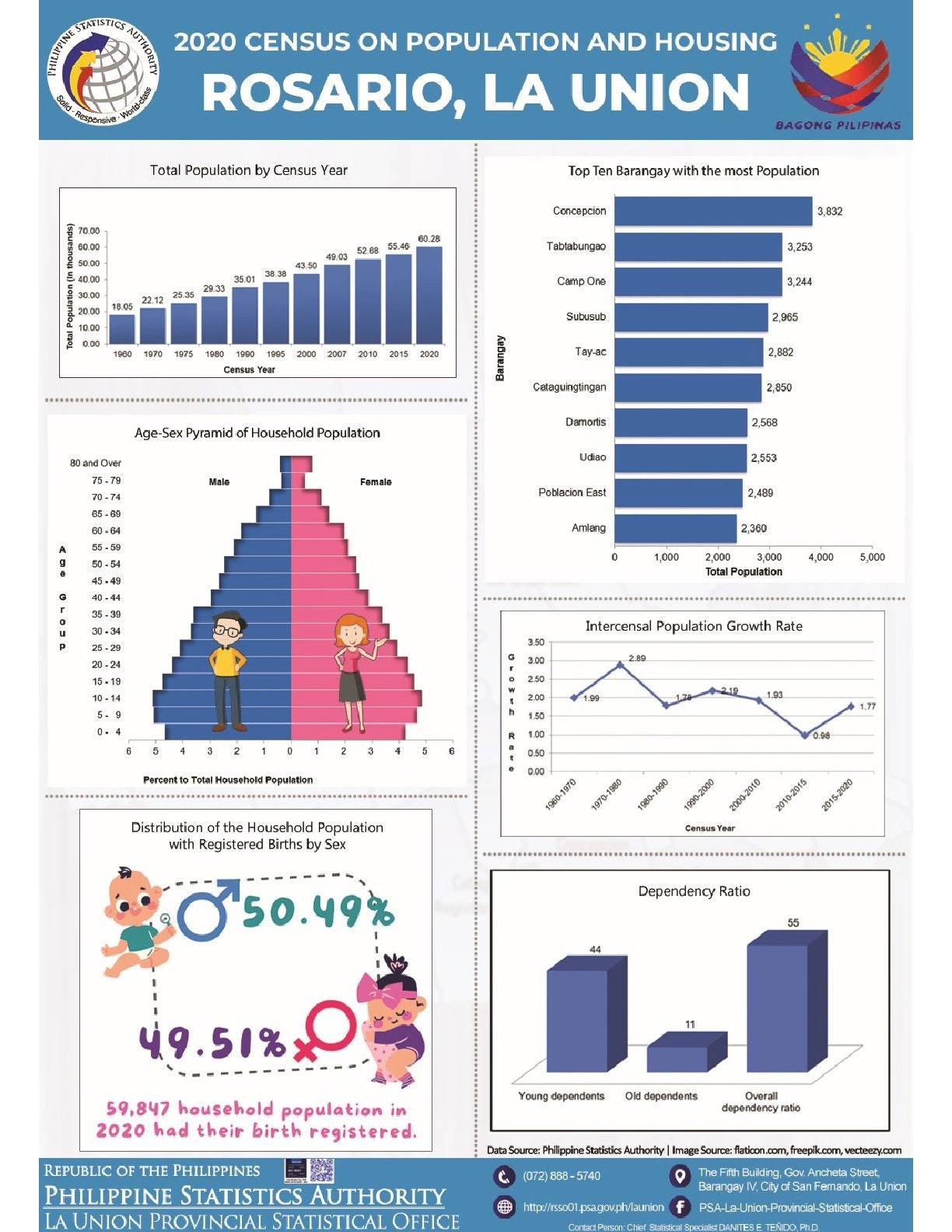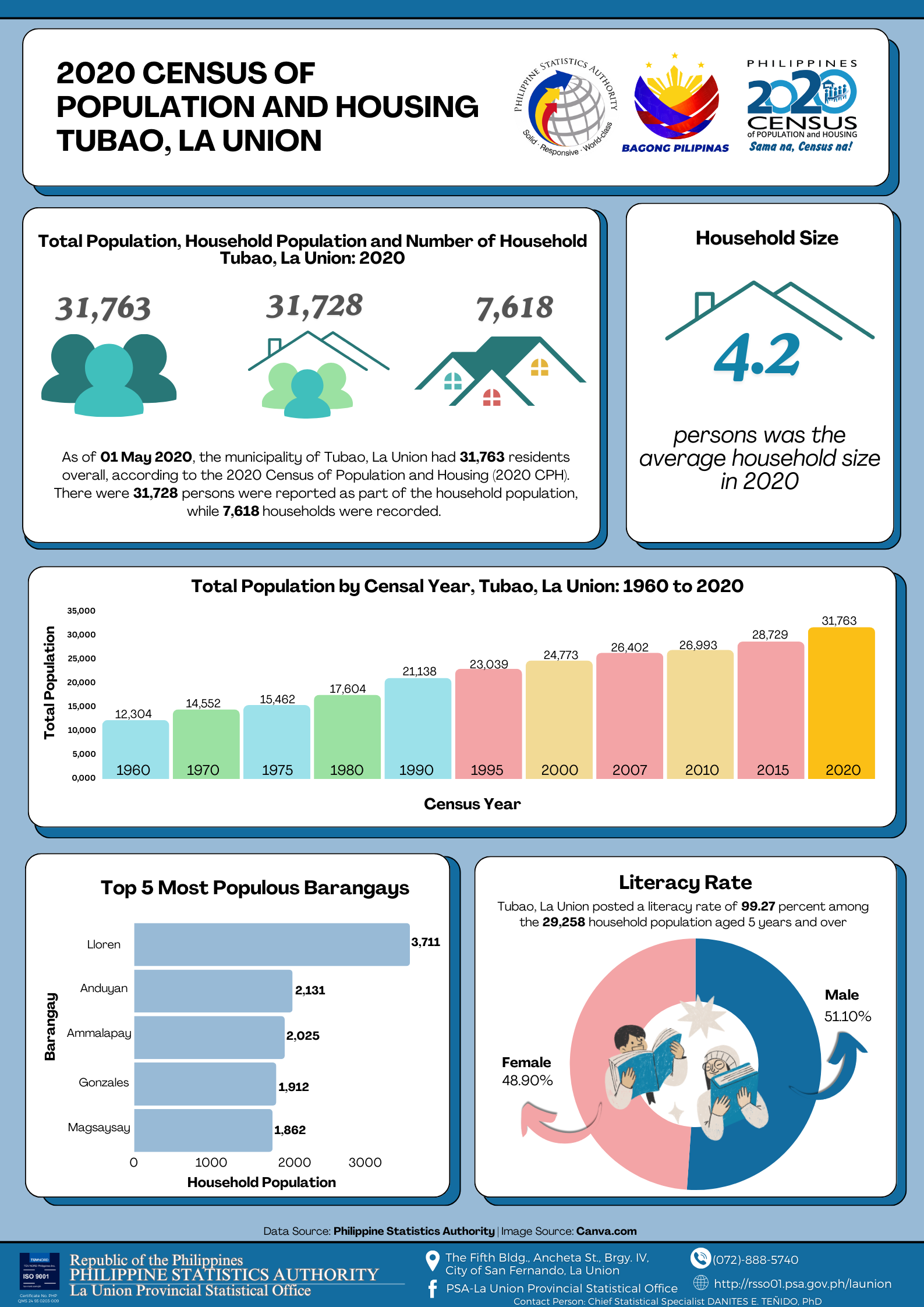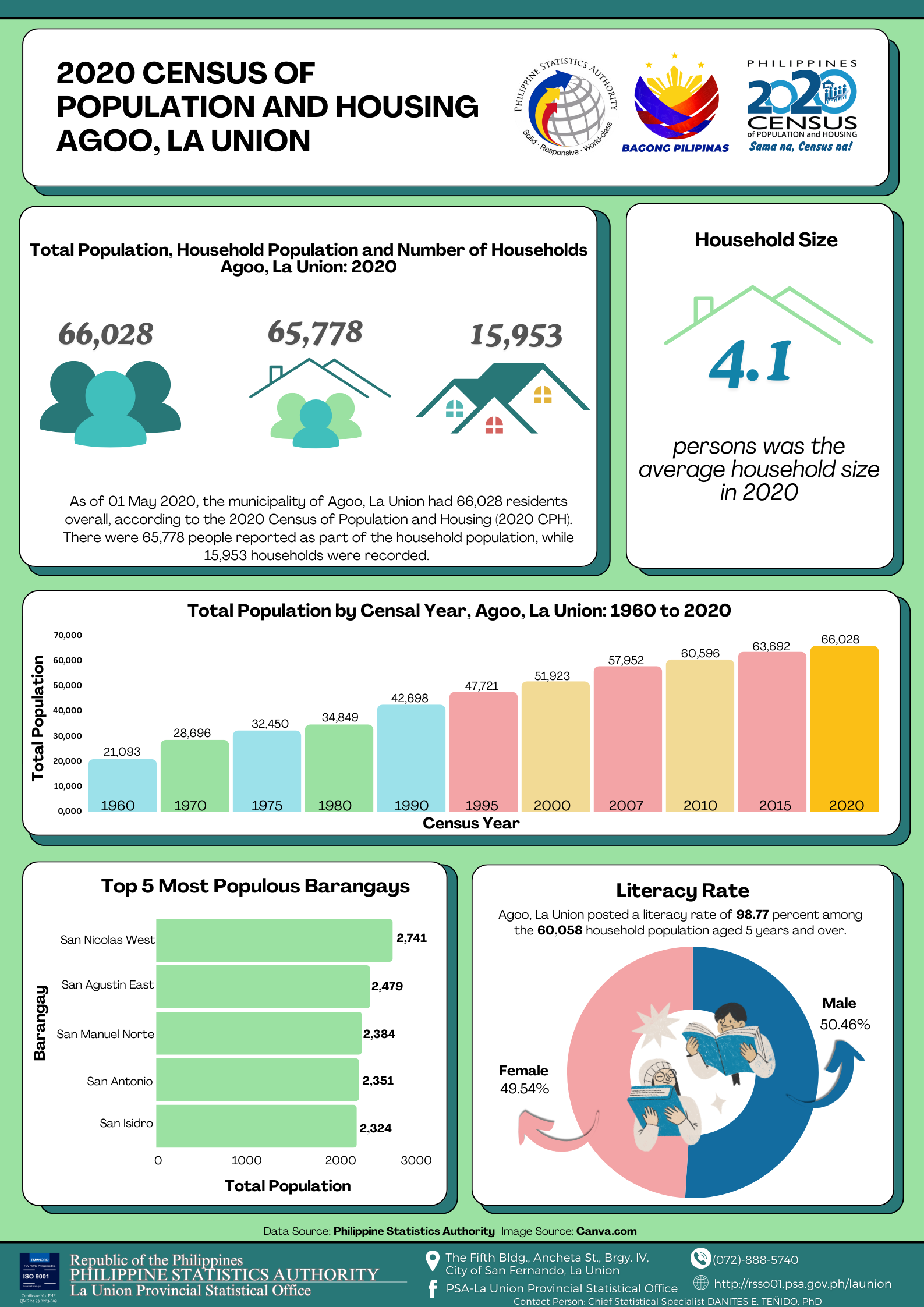About CPH
Census of Population and Housing (CPH) refers to the complete process of collecting, compiling, evaluating, analyzing, publishing, and disseminating data about the population and housing units in the country. It entails primarily the listing and recording of the characteristics of each individual and each living quarter as of a specified time and within a specified territory. Other information gathered in the CPH are selected household and barangay characteristics.
The 2020 CPH is designed primarily to take an inventory of the total population and housing units in the Philippines. It also collects information about the demographic, social, economic, and cultural characteristics of the population and the structural characteristics and facilities of the housing units. The census of population is the source of data on the size, distribution, and composition of the population. The census of housing, on the other hand, provides information on the supply of housing units and other information on the structural characteristics and facilities that have bearing upon the maintenance of privacy and health and the development of normal family living conditions. These data, which are collected for different geographic units, that is, from the national down to the barangay level, are vital in making rational plans and programs towards national and local development.
Specifically, the 2020 CPH seeks to gather data on:
1. demographic characteristics, such as the size, composition (sex, age, and marital status), and geographic distribution of the population;
2. socio-economic characteristics of the population, such as birth registration, religious affiliation, citizenship, ethnicity, functional difficulty, residence of mother at the time of birth of member, residence five (5) years ago, literacy, highest grade/year completed, school attendance, place of school, overseas worker, usual activity/occupation, kind of business or industry, class of worker, place of work, and selected fertility indicators;
3. household-level characteristics, such as land ownership, presence of operator in crop farming, livestock and/or poultry raising, aquaculture, fishing, and other farm/activity, language/dialect generally spoken at home, residence five (5) years from now, presence of household conveniences/information and communication technology (ICT) devices/vehicles, and internet access and use;
4. housing characteristics, such as number of housing units in the country, their geographic location, structural characteristics, and selected facilities; and
5. barangay characteristics, including the presence of selected facilities and number of establishments by type and employment size, which will be used as bases for (i) urban-rural classification of barangays, (ii) presence and number of informal settlers, (iii) presence and number of households in relocation areas, and (iv) occurrence and number of households who moved in/out of the barangay due to various reasons such as natural and man-made disasters/calamities, relocation, peace and order problems, and others (demolition or commercialization), and specific area/s of origin/destination.




